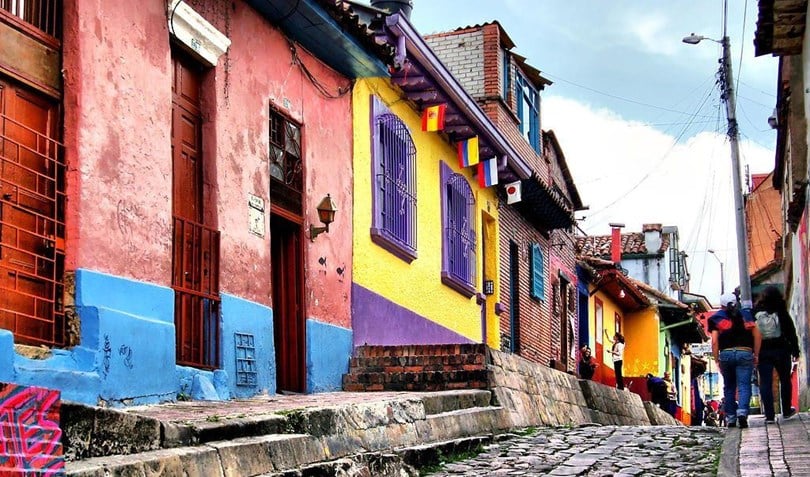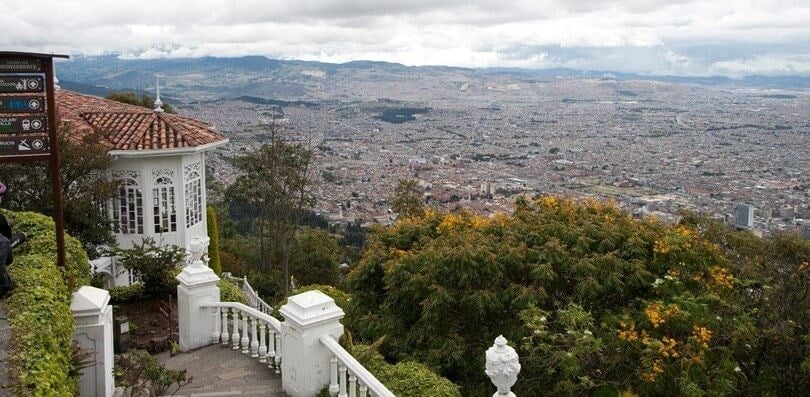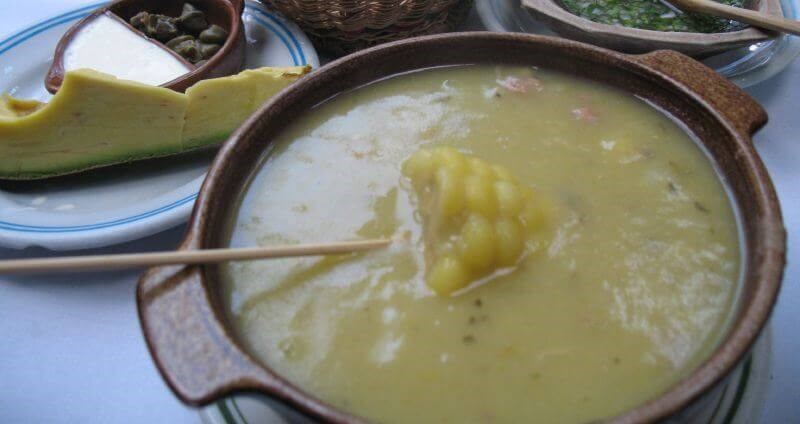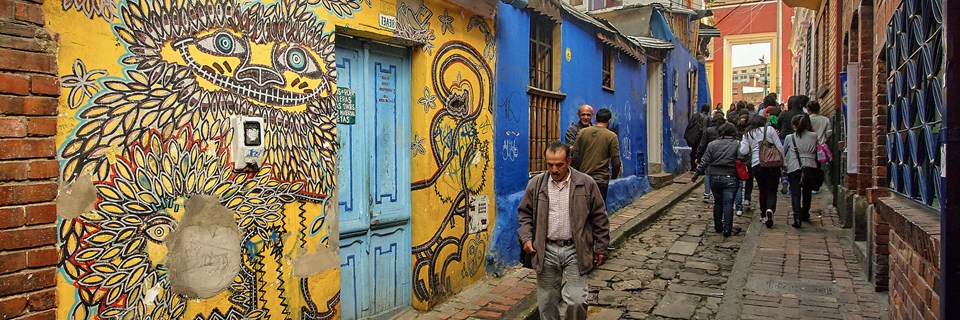Get the lowdown on Colombia's high altitude capital, with our handy Bogota city guide.
City Guide: Bogotá
Surrounded by the towering peaks of the Andes mountain range, at an elevation of 2,600 metres above sea level, Bogotá is Colombia's cosmopolitan and lively capital. It is a city of gorgeous churches, magnificent museums and local markets, within reach of the hillside haciendas that produce the coffee for which the country is renowned.
Symbol of the City: The picturesque neighbourhood of La Candelaria forms the historic old town of Bogotá, where the colonial architecture and cobbled streets have survived the rapid expansion of the city. It is home to many government buildings, the beautiful Iglesia del Carmen and the fascinating Museo del Oro - one of the finest collections of pre-Columbian gold artefacts anywhere in Latin America. Around half a million visitors a year come through the doors here each year, rewarded with a wonderful insight into life before the Spanish conquistadors arrived.

Photo credit - Martinduquea
Star Attraction: There are three ways to reach the summit of Cerro Monserrate; most prefer the cable cars or the funicular, but for the more active there is an energy sapping climb up a winding path, one you might just share with pilgrims making the last leg of their journey in defiance of the increasing altitude (which reaches 3,152 metres above sea level). However you get to the top, you'll be rewarded with a breathtaking vista of the city sprawled out below you and surrounded by verdant hillside vegetation. Once you've got your bearth back you can explore the church itself and the shrine to The Fallen Lord and then eat at one of two restaurants here. One of the defining experiences of your time in Bogotá.

Hidden Gem: Bogotá's Plazas de Mercado are the places to go to try any number of traditional Colombian meals, to see huge displays of colourful flowers and exotic fruits and to see local people come together as they catch up with friends and family. The markets are an important connection between the rural communities and the capital city, with many of the ingredients having been grown in the fertile lands which surround it. The sights, sounds and smells of the market places will linger long after you leave, as will the taste of your first papaya, guanabana, guava or dragon fruit. Two of the best markets are 12 De Octubre and Siete de agosto. We have a choice of half day culinary tours of Bogota.

Eat & Drink: Given its reputation as one of the world's premier coffee producers, it might come as a surprise to hear that, relatively speaking, Colombians are not overly fussed by it. A 2013 study ranked Colombia as the 55th biggest consumer in the world, at an average of 1.8kg of coffee per year per person (compared to 2.8kg in the UK and 12kg in Finland). Given that most Colombians prefer a short, sharp blast of caffeine in the form of a Tinto, there has, up until recently, been little in the way of real coffee culture in the capital.
Fortunately some cafes are starting to cotton on to this and have recently started to explore the idea of tastings and even workshops and lectures and there are several traditional cafes dotted throughout the city centre where you can enjoy a cup or two in more relaxed surroundings.
In Bogotá and the surrounding Andean region, the most traditional dish is ajiaco soup - made with chicken, potatoes and the local guasca herb and served with rice and avocado.

After Dark: Usaquen is one of the more upmarket barrios in Bogotá that by day offers a bustling flea market and laid-back vibe, but transitions into a lively hotspot the after the sun sets. A variety of restaurants and bars are distributed along cobbled streets lined with pretty colonial era architecture, making it a pleasant alternative to the more raucous Zona Rosa barrio.
Escape: 30 miles from Bogotá and easily reached by coach or train is the surreal underground Roman Catholic cathedral of Zipaquirá. Visitors descend some 180 metres below ground to visit the sanctuary, carved into the disused salt mine and featuring a 16 foot high cross behind the altar. The cathedral remains a place of pilgrimage for many Colombians and continues to serve as a functioning place of worship on Sundays.
Slightly further afield, the Pereira coffee region is perhaps the best place in Colombia to experience one of the cornerstones of the country's economy and identity, and can be reached by road from the capital. Tours of the traditional San Alberto hacienda lead you on a journey through the entire coffee producing process, before sampling the best roasts in the company of an expert.

When to Go: Bogotá's altitude keeps its climate generally quite stable, offering comfortable temperatures all year round. The months between April and June are usually the wettest, though its position close to the equator and the El Nino phenomenon means that the weather can vary quite dramatically from one year to the next. The population swells at the beginning of August east year as the city comes to a standstill for the carnival.

Stay in touch
Infuse your travels, with inspiration from our monthly newsletter.
READY - 12 April 2024
INDIA: Fascinating Culture & Kembh Mela Festival
LANDMARK TOURS: Multi-Country & Cross Continent. New Cosmopolitan Tour: Buenos Aires, Iguazu, Rio
CHINA & INDIA: Local Life, People & Unique Cultures
GUIDES by Veloso Tours, are the best Local Hosts
PRIVATE VILLAS: Quality Time in exclusive settings
TRAVEL INSURANCE with extensive COVID-19 cover
